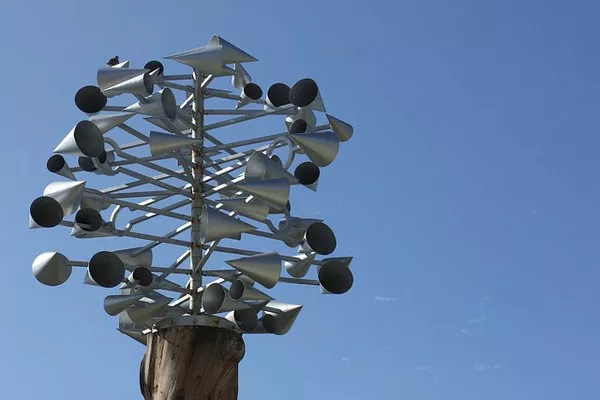Anemometers, crucial tools in meteorology and various industries, measure wind speed and direction. Their accuracy is essential for applications ranging from weather forecasting and climate research to wind energy production and aviation safety. A critical factor influencing the accuracy of an anemometer is its placement height above the ground. This article delves into the scientific rationale, standards, and practical considerations for the optimal height at which an anemometer should be placed to ensure precise wind measurements.
Understanding Wind Profiles
To comprehend why height matters, it’s essential to understand the wind profile, which describes how wind speed changes with altitude above the ground. Near the surface, wind speed is generally lower due to friction with the terrain and obstacles such as buildings, trees, and other structures. As the height increases, friction diminishes, and wind speed typically increases until it reaches a level where the atmospheric flow is relatively undisturbed by surface roughness. This layer, known as the boundary layer, varies in thickness but is generally found within the first few hundred meters above the ground.
Standard Placement Heights
Various organizations and standards bodies have established guidelines for the height at which anemometers should be placed to ensure consistent and comparable measurements.
World Meteorological Organization (WMO): The WMO recommends that standard meteorological anemometers be placed at a height of 10 meters (approximately 33 feet) above ground level. This height is considered a compromise that minimizes the effects of surface friction while being low enough to be practical for most installations.
International Electrotechnical Commission (IEC): For wind energy assessments, the IEC suggests that anemometers should be placed at multiple heights on meteorological masts. These heights often include 10 meters, 30 meters, and the hub height of the wind turbines, which can range from 80 to 120 meters or more. This multi-level measurement approach helps in creating detailed wind profiles crucial for turbine performance optimization and energy yield estimation.
American Society of Civil Engineers (ASCE): In guidelines for structural engineering and wind load assessments, the ASCE also endorses the 10-meter standard for general meteorological measurements but emphasizes site-specific adjustments based on local terrain and structural configurations.
Factors Influencing Anemometer Placement
While standard heights provide a general guideline, several factors necessitate adjustments to the placement height of an anemometer:
Terrain Roughness: Areas with dense vegetation, urban structures, or mountainous terrain require higher placement to mitigate the distorting effects of surface friction. Conversely, flat, open areas like deserts or plains may adhere more closely to the 10-meter standard.
Local Obstructions: Buildings, trees, and other obstructions can create wind shadows and turbulence, leading to inaccurate readings. Anemometers should be placed sufficiently above such obstructions, typically at least 1.5 to 2 times the height of the nearest obstacle.
Purpose of Measurement: The intended use of wind data significantly influences placement. For instance, agricultural applications might focus on lower heights to understand wind effects on crops, whereas aviation requires data from higher altitudes to ensure safe flight operations.
Climatic Conditions: In regions prone to extreme weather conditions like hurricanes or blizzards, anemometers might need to be placed higher to avoid damage and to capture undistorted wind data critical for emergency response and weather forecasting.
Practical Considerations
Mast and Tower Stability: The structural integrity of the mast or tower supporting the anemometer is paramount, especially at greater heights. Wind forces increase with height, necessitating robust design and anchoring to prevent tilting or collapse.
Maintenance Accessibility: Regular maintenance is essential for ensuring the anemometer’s functionality and accuracy. Placement should balance height with accessibility, considering the safety and ease of technicians performing routine checks and calibrations.
Data Transmission and Power Supply: High placement heights may require more sophisticated solutions for data transmission and power supply. Wireless data transmission and solar or wind-powered systems can be effective in remote or challenging locations.
Case Studies and Applications
Wind Energy: In wind farms, anemometers are placed at multiple heights to capture comprehensive wind profiles. For instance, a typical setup might include sensors at 10 meters, 30 meters, and the hub height of turbines, which can be up to 120 meters. This data is crucial for turbine placement, energy yield estimation, and operational efficiency.
Meteorological Stations: National weather services follow the WMO’s 10-meter standard to ensure consistency and comparability of data across different regions and time periods. This standardization is vital for accurate weather forecasting and climate modeling.
Urban Environments: In cities, anemometers are often placed on tall buildings to bypass the complex wind patterns created by the urban landscape. These measurements help in urban planning, pollution dispersion studies, and ensuring the safety of high-rise structures.
Aviation: Airports install anemometers at various heights along runways and near flight paths to provide real-time wind data essential for safe takeoff, landing, and navigation. These sensors are placed higher than typical meteorological standards to account for the critical safety requirements of aviation.
See also Why Are Aneroid Barometers Used More Often?
Conclusion
The height at which an anemometer is placed above the ground significantly impacts the accuracy and reliability of wind measurements. While the 10-meter standard set by organizations like the WMO provides a useful guideline, site-specific factors and the intended application of the data often necessitate adjustments. Understanding the interplay between terrain, obstructions, and climatic conditions is crucial for determining the optimal placement height. As technology advances, integrating sophisticated data transmission and power solutions will further enhance the effectiveness of anemometers in capturing precise wind data, ultimately benefiting a wide range of industries and applications.

